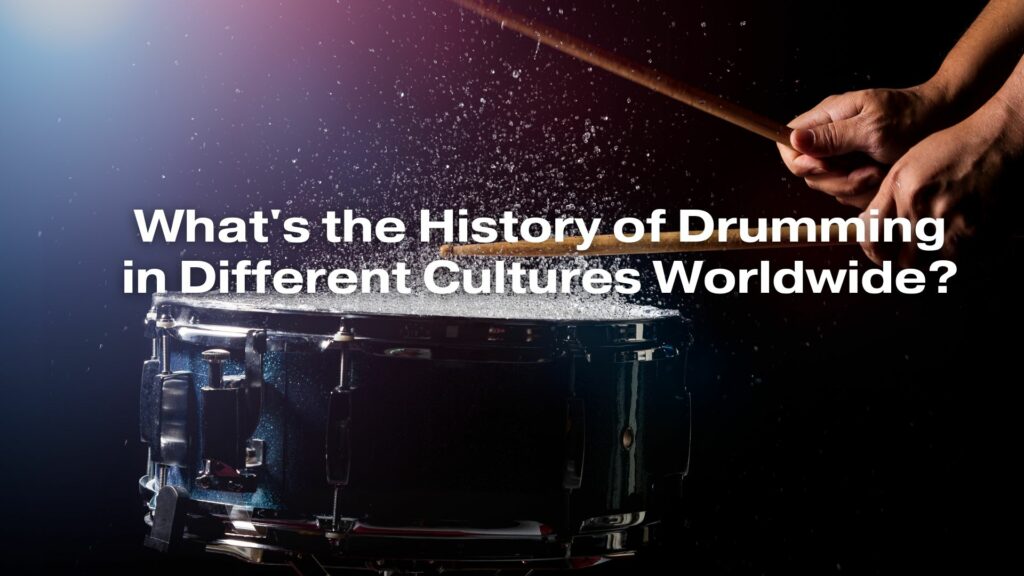Drumming is one of the oldest and most universal forms of musical expression, deeply rooted in the history and cultures of people across the globe. Here’s a brief overview of the history of drumming in different cultures worldwide:
1. African Drumming:
- African drumming is a diverse and rich tradition, with a wide variety of drums and rhythms.
- Drums in Africa have been used for communication, religious rituals, and entertainment for thousands of years.
- The djembe, talking drum, and the dundun are some of the most well-known African drums.
2. Native American Drumming:
- Native American drumming has a profound spiritual significance and is used in various ceremonies and dances.
- The frame drum and the powwow drum are central to Native American drumming traditions.
3. Middle Eastern Drumming:
- The Middle East has a long history of drumming, with instruments like the darbuka, doumbek, and tabla being prominent.
- These drums are often used in belly dancing, traditional music, and cultural celebrations.
4. Indian Drumming:
- India has a rich drumming tradition, with instruments like the tabla and mridangam playing a significant role in classical and folk music.
- The tabla, in particular, is known for its intricate rhythms and tonal variations.
5. Asian Drumming:
- In countries like Japan, taiko drums are an essential part of traditional music and performances.
- In China, drums have been used for both musical and ceremonial purposes, and they vary in size and shape.
6. Latin American Drumming:
- Latin America has a diverse drumming heritage, with various rhythms and instruments.
- The conga, bongo, timbales, and cajón are some of the widely recognized Latin American drums.
7. European Drumming:
- In Europe, drums have played a role in both military and folk music traditions.
- The snare drum, bass drum, and the bodhrán (a frame drum from Ireland) are examples of European drums.
8. Southeast Asian Drumming:
- Countries like Indonesia and Malaysia have a rich tradition of gamelan orchestras, which feature gongs, metallophones, and drums.
- The kendang, a double-headed drum, is commonly used in various Southeast Asian music traditions.
9. Indigenous Australian Drumming:
- Indigenous Australians have a history of using percussion instruments like the didgeridoo, clapsticks, and various drums in their cultural ceremonies and music.
10. Modern Drumming:
- Drumming has evolved over time and now encompasses various genres, from rock and jazz to electronic and hip-hop.
- Drum kits, a relatively recent development, have become central to contemporary music, and famous drummers like Gene Krupa, John Bonham, and Neil Peart have left a lasting impact on the art of drumming.
Throughout history, drums have served various purposes, from communication and ritualistic ceremonies to cultural expression and entertainment. The diversity of drumming traditions across the world is a testament to the power and significance of this universal form of musical expression. It continues to evolve and adapt in the modern era, enriching the world of music and culture.


